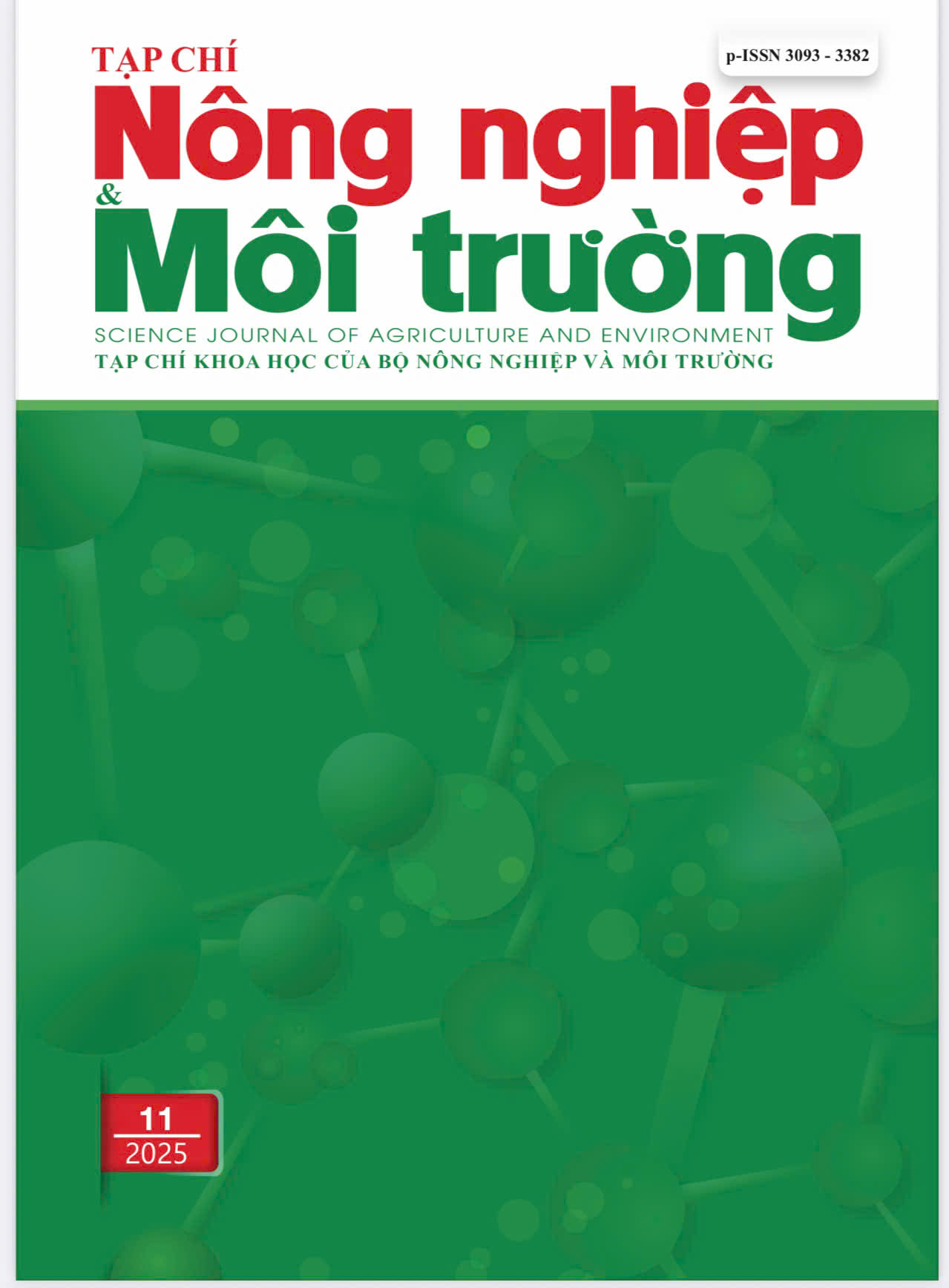ẢNH HƯỞNG CỦA CHẾ ĐỘ CHẦN ĐẾN HÀM LƯỢNG AMYGDALIN VÀ TÍNH CHẤT HÓA LÝ CỦA BỘT KHOAI TỪ (Dioscorea esculenta L.)
DOI:
https://doi.org/10.71254/ncnfad41Từ khóa:
Amygdalin, bột khoai từ, chần, độ cứng gel, độ nhớt, màu sắcTóm tắt
Khoai từ (Dioscorea esculenta L.) giúp ổn định chỉ số đường huyết, chống viêm, chống đái tháo đường và kháng khuẩn. Tuy nhiên, khoai từ có chứa độc tố amygdalin gây đắng và chóng mặt. Mục đích của nghiên cứu này là đánh giá mức độ ảnh hưởng của nhiệt độ chần (70, 80, 90oC) và thời gian chần (60, 80, 90 giây) khi xử lý nhiệt miếng khoai từ (bề dày 2 - 3 mm) đến sự thay đổi hàm lượng amygdalin, màu sắc, độ trương nở, tính chất nhớt RVA (Rapid Viscosity Analysis) và độ cứng gel của bột khoai từ. Kết quả cho thấy, nhiệt độ chần đóng vai trò chủ đạo (chiếm 50 - 80%) trong việc làm giảm hàm lượng amygdalin, thay đổi các thông số RVA và độ cứng gel. Thời gian chần cũng góp phần đáng kể (10 - 30%) vào sự biến đổi màu sắc, độ trương nở và các đặc tính khác. Cụ thể, việc tăng nhiệt độ chần từ 70 - 90oC dẫn đến bột khoai từ có hàm lượng amygdalin giảm 10%; độ trương nở giảm 21%; độ nhớt cuối giảm 41%; nhiệt độ hồ hóa giảm 12%; độ cứng gel giảm 81%; nhưng ảnh hưởng không đáng kể đến giá trị sáng (L) và độ trắng (WI). Độ cứng gel của bột khoai từ có mối tương quan thuận chiều với độ nhớt, độ trương nở. Kết quả nghiên cứu chỉ ra rằng, khoai từ được chần ở nhiệt độ 80°C trong 90 giây là điều kiện tối ưu để bột khoai từ có hàm lượng amygdalin thấp nhất (68,38 mg/100 g CK), nhưng đạt giá trị cao nhất về giá trị độ sáng L (93,53); giá trị độ trắng WI (85,15); độ cứng gel (0,47 N/cm2) và không thay đổi đáng kể độ trương nở (11,14 g/g CK); nhiệt độ hồ hóa (92,08oC) và độ nhớt cuối (3.438,5 cP).








